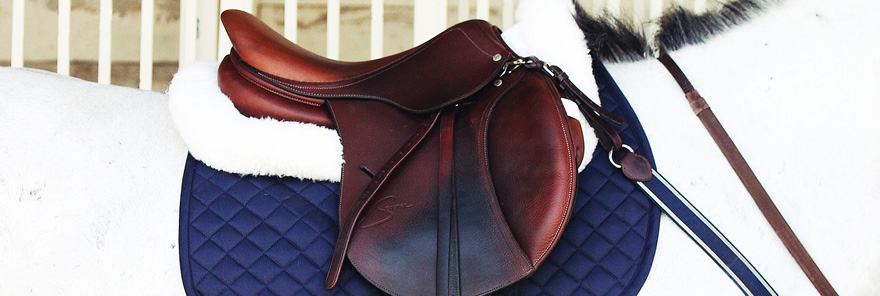Winter is nothing but trouble.
Horses are determined to grow into wooly teddy bears, blankets get muddy and ripped, buckets and water troughs freeze. And of course, winter comes with its own set of problems for our leather saddles and bridles, to say nothing of our boots.
It’s not just the constant temperature dives and climbs that can damage tack. Indoor arenas keep tack dry, but often dust seems to accompany every ride, no matter how well-watered the footing is kept. And riding outdoors through a medley of rain, ice, and snow (not to mention road dirt and salt) can wreak havoc on fine leather.
Climate Control: If you can keep your saddle indoors and away from daily temperature swings, you’ll be doing the leather a favor: temperature and humidity shifts cause leather to grow brittle and weak. The same is true of synthetic materials, so if your tack stays in a tack room or stable without heat during the winter, check it over every time your ride to make sure no dangerous cracking has occured.
Do your dusting: If you’re riding in an indoor or even a dry arena, you probably have a dust situation on your hands. Remove the dust from your saddle and bridle after every ride. A build-up of dust, combined with moisture like sweat, rain, or a tacky saddle soap, can end up creating a layer of grime that isn’t easily removed. The best tool for removing dust is a horse-hair brush, just like the finishing brush for your horse — the fine fibers flick the dust away. A small shoe-shine brush is handy for getting into crevices, under the flaps, and around the saddle’s metal fittings.
Suds: Regular cleaning with saddle soap is especially important if you’re dealing with winter mud, slush, or road salt. Many saddlers recommend a gentle soap like Murphy’s Oil Soap for daily use — use a capful with a quart of warm water and rub it in after you’ve brushed away the dirt.
Oil Treatment: Help your tack deal with the fluxes in temperature and moisture by replenishing its natural oils at least once a week. Leather responds to cold temperatures by growing brittle and drying out, so regular oiling is most important when the mercury drops. Traditional choices like Neatsfoot oil or olive oil do the job on leather — rub it in with a washcloth on both sides and let it penetrate the leather thoroughly. This will help you avoid cracks in your leather — and stop any new ones from growing longer or deeper.
Conditioning: Leather conditioners shouldn’t be confused with saddle soap or oils — they’re generally cosmetic, bringing back the luster of the leather and muting the appearance of scratches. If you apply a conditioner, wait until after the oil has had time to penetrate and the leather is completely dry. It will help keep your boots, saddle, and bridle beautiful, but it won’t remove dust, dirt, sweat, or other salt, so don’t leave out the other steps and just slap on some conditioner!
Always inspect your tack thoroughly after a big temperature flux, especially if temperatures went from fairly balmy to below freezing, and again if they go in the opposite direction. Maintaining a regular cleaning and oiling routine will help your leather deal with the cold temperatures — you’re on your own, though!


